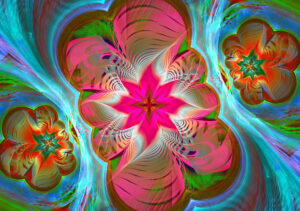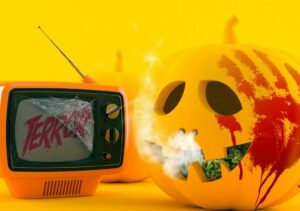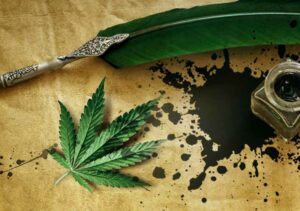Of the seven main forms of art, music is probably the most closely connected to cannabis. If you ask anyone to free associate between weed and any artist, I doubt they’ll think of an architect, dancer or painter first. Why is that?
Many artists have spoken about their vision of art and its role in our lives. For some, art is the plug for social change. Others view it as a means to attain personal freedom. Most artists will agree that the role of art is to enhance reality, to make its “users” see different aspects of reality more clearly, or experience it more strongly.
Speaking of “enhancing” reality, this is where marijuana and art meet and start walking hand in hand. Both art and weed can enlighten us, change our perception, and make us glimpse the world from a new aspect. And no art does it better in combination with weed than music.
This association probably started in the 20th century, with jazz, reggae and rock sounds. Though there is some evidence of classical composers using different drugs for creative boost or pain relief, it seems that opium and painkillers took the lead in earlier centuries. Or, it’s more likely that we simply don’t have enough information about the behavioral pattern of musicians at that time. Those of you who are not opposed to some classical music (even if you aren’t 70 years old) can discover true gems of psychedelia exploration in this genre.
The best example of how effective partnership between weed and music can be is the hippie revolution that tried to change the world for the better. Built in the base of this counterculture ideology were music and weed.
Why do “joints and jam” go together?
There are not enough scientific studies to confirm our biological reactions to music are enhanced by marijuana. Instead, there are many self-reports, interviews, biographies, accounts from literature, and similar documents that are not scientifically verifiable.
One such study that mostly used narratives of musicians and music listeners concluded that “THC has a measurable influence on cerebral music processing and seems to enhance acoustic perception temporarily.”
Then, there is one opposing study that seems to suggest that cannabis actually numbs the musical experience. Though the researchers started with the expectation that cannabis use would enhance music enjoyment, they received different results. In their conclusion, they state that “one possible explanation for our findings is that THC interfered with the endocannabinoid system, which plays a critical role in reward processing”.
However, numerous personal experience accounts and studies confirm that marijuana use changes one’s perception of time, color and space. We also wrote about the study that looked at what happens in the brain when THC is introduced, which explains how THC increases the functional activity of the brain, leading to the heightened sense of the world around us. The musical experience (both playing it and listening to it) will by extension also be altered, and in many cases, augmented.
Of course, there’s the risk of missing out on the positive musical experience altogether if high THC strains are used.
Finally, Vice did great work interviewing three university professors who discussed their views on why people seem to appreciate music more when they are high. One of them speculates that the relationship between the two is rather cultural than neural, and also wonders whether it’s a “happy coincidence in two things that might be activating similar brain areas”.
He also says that the reason why there are essentially no studies about marijuana in connection to music is that these two topics are studied by different groups of scientists. “The people interested in how drugs affect the brain are not interested in music and vice versa.”
Marijuana and the musical creative process
Many musicians’ names have become almost synonymous with weed, the first in line probably being Bob Marley. Whether they have composed their songs under the influence, or their open cannabis-friendly lifestyle earned them the reputation, there’s quite a group of musical giants whose work is closely connected to cannabis.
One may wonder how much work can actually be done under mind-altering substances. But artistic/creative work does not conform to the rules of some other forms of work that require structure, discipline and the traditional view of the world.
Creativity is an elusive category, and as such, it makes sense to respond well to the elusive state of a marijuana-treated mind. Don’t take our word for it, but read or listen to what musicians say about it. Many of them, living or dead, such as Lady Gaga, Alanis Morissette, Madonna, Louis Armstrong, Jerry Garcia, etc. have spoken openly about marijuana being their muse in the creative process.
Whether creative people are naturally drawn to mind-altering substances, or the substances help them become creative is open for discussion.
420 and music
Ever since the ’70s, April 20 has been celebrated as the main cannabis holiday.
There are many legends about the origin of this holiday. Some think 420 used to be a police code for smoking pot back in the 1970s. Some think it goes back to as early as the 1930s and the story by H.P. Lovecraft about a character who gets high from a curious plant every day at 4.20. Another theory bases the holiday’s origin on a theory that marijuana has 420 active chemicals.
However, the story about Waldos is the most likely to be true. The Waldos was a group of high school kids from California who gathered to smoke marijuana every day at 4:20. Soon the smoking time became a code for the ritual.
The reason it spread is that the brother of one of the Waldos knew a member of one of the most popular bands of the time, Grateful Dead. He got them into their rehearsals, and they’d get high on those occasions. Since they were already using the code “420” for smoking pot, chances are high it got to the Dead members as well. That’s how the code probably got popularized and then turned into the specific date – 4/20 – when marijuana users celebrate their day.
Concerts and weed
Since the dawn of civilization people have felt the need to express joy through dance and song. “Playing music can modulate the levels of dopamine, the so-called feel-good hormone,” says Dr. Daniel Levitin in his TED talk on music.
For many marijuana users, one of the primary reasons for using the plant is the same – to feel joy, elevated sense of reality, to feel a heart-warming connection with others.
So, if you had to describe in one word what concerts smell like, chances are high the word would be “weed”. From Woodstock, arguably the most important concert of all times (because of its political and social impact on the world), to today’s music festivals and live performances, marijuana is probably the most constant and reliable concert companion.
With the wave of marijuana legalization laws spreading over the American continent (and the rest of the world), more and more cannabis festivals are emerging. They started out as political protest gatherings, but today they are becoming more of a mainstream event where people can gather to smoke pot, try new products and participate in strain competitions. And guess which element has become a must for an exceptional cannabis festival? Music, of course.
What to listen to when 420-ing
There are zillion lists of this kind on the Internet, including one of our own. Well, now there’ll be a zillion and one. You know how people can’t refrain from telling their dreams to others, even though that’s usually quite boring for the listener? Well… What can I say. Here’s the list (with an explanation as to why each particular song made it to this short and sweet, absolutely non-boring list).
- White Rabbit, Jefferson Airplane.
Because an interesting “weed influencer” reminded me of the song. “If you’re familiar with Jefferson Airplane “White Rabbit”, that’s definitely the sound of my thoughts,” she said for We Are the Guard. “I honestly can’t think of a better pairing. Music and weed, well, maybe sex and weed.” - Ride of the Valkyries, Richard Wagner
People don’t listen to classical music enough, yours truly included. That’s a shame. Can weed change that? If more people experienced the effects of the classical music+pot mix, I’m sure the average classical music listener’s age would quickly drop from 73 to 25. - Welcome Home, Osibisa
Simply a beautiful song, with hints of psychedelia. Osibisa is an Afro-Caribbean band that you have to listen to, if you haven’t already. High-CBD, low-THC strains are recommended for the best experience of the soothing, somewhat wistful elements in the song. - Heroin, Velvet Underground
I’m sure Velvet Underground mistakenly titled this song “Heroin”, instead of “Pot.” Okay, there’s a reference to “spike in the vein” in the lyrics, and all that, but if you let your mind focus on the music and don’t pay attention to words, this will become your all-time favorite cannabis-inspired song. - You Don’t Know How It Feels, Tom Petty
If I discredited my authority with the previous suggestion, here comes RollingStone to the rescue. If they say this is a great weed-themed song, who are we to object? (By all means, feel free to object in the comments).






Jordan A Newsom June 27, 2020 at 4:09 pm
What about the early 1900 jazz scene. Where is that music all the jive is gone, save a roach for me, when i get high i get low?
Ana Stanojevic June 29, 2020 at 1:00 pm
Hey Jordan, thanks for adding to the list! As you can see, there are only 5 songs there, so there's A LOT of room for more. You're right, the list is uneven, with over 50% of recommendations being from the hippie period. We'll update the list shortly!